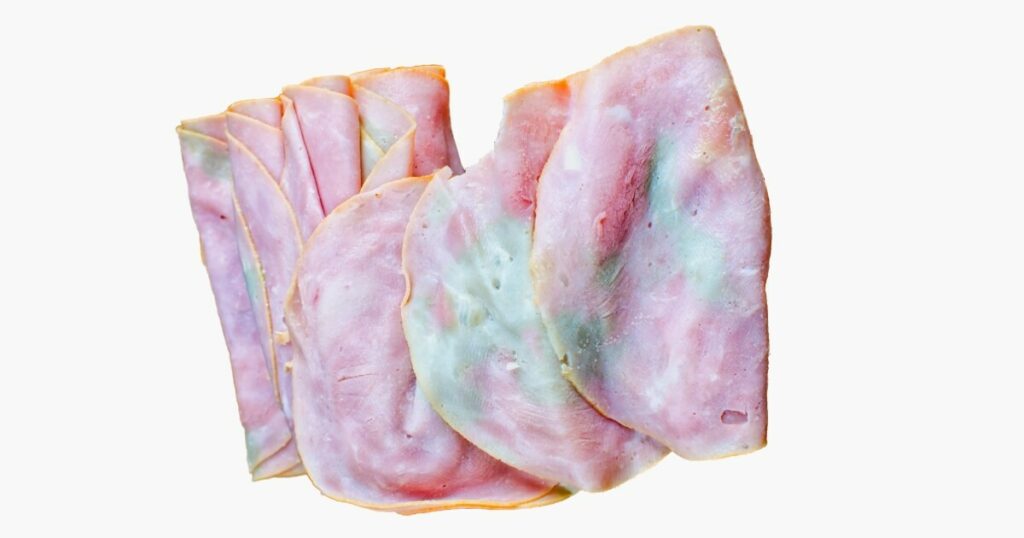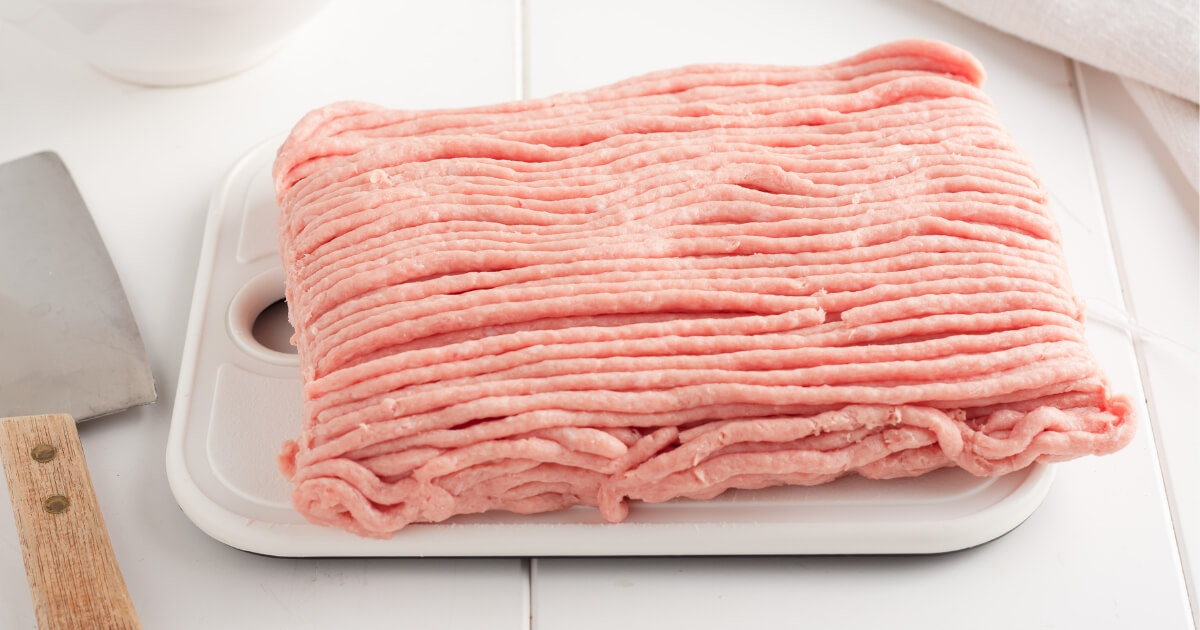Sandwiches are my all-time favorite food. Meat, cheese, bread, and toppings are tasty any time of day or year. But how often have you gone to use some deli meat from your fridge and second-guessed if it’s bad?
How long does lunch meat last? In most cases, it’s best to use your deli meat within five days (or up to 14 days for cured meats) to get the best flavor and texture. But, as with most things, it depends!

In this guide, I’ll get into the specifics of storing and handling different types of sandwich meat, share some personal experiences, and provide tips to help make every sandwich you make is both delicious and safe.
How Long Is Deli Meat Good For?
After opening or if purchased freshly sliced from the deli, consume them within three to five days for optimal freshness. If you’re using pre-packaged lunch meat past the sell-by date, it’s generally safe for up to seven to 10 days. Always ensure your refrigerator maintains a temperature of 40°F or below.
Understanding how long deli meat stays fresh in the fridge is important for taste and safety. Here’s a quick chart on how long different types of deli meats last:
| Deli Meat Types & Status | Shelf Life | Notes |
|---|---|---|
| Pre-packaged (Unopened) | Up to 2 weeks | Keep refrigerated on bottom shelf |
| Pre-packaged (Opened) | 3 to 5 days | Consume quickly for freshness |
| From the deli counter (Fresh) | 3 to 5 days | Store in airtight containers |
| Pre-packaged past “sell-by date” (Unopened) | Up to 10 days | Check for signs of spoilage |
Deli meats go by many names, such as lunch meat, luncheon meat, cold cuts, sandwich meat, and sliced meat. Of course, there are a lot of varieties of specific cuts of meat that those terms cover.
While the above chart is a great guide to cover lunch meat, some have more forgiving shelf lives.
Here are some of the most popular pre-packaged deli meat and their shelf life (Printed date refers to the sell-by date. Always check your package date and check for spoilage before consuming):
- Salami up to 2 weeks if opened, 3 weeks past printed date if unopened (pre-packaged)
- Deli Turkey 3 to 5 days if opened, 5 to 6 days past printed date if unopened (pre-packaged)
- Bologna 3 to 5 days if opened, 2 to 3 weeks past printed date if unopened (pre-packaged)
- Ham 3 to 5 days if opened, 5 to 6 days past printed date if unopened (pre-packaged)
- Roast Beef 3 to 5 days if opened, 5 to 6 days past printed date if unopened (pre-packaged)
- Pepperoni up to 2 weeks if opened, 3 to 4 weeks past printed date if unopened (pre-packaged)
- Prosciutto up to 2 weeks if opened, 3 months past printed date if unopened (pre-packaged)
Pre-packaged and sealed lunch meats typically have a longer shelf life because they may include additional preservatives, have been processed more, and are sealed under strict conditions to allow them to be stored for longer periods.
How Long Can Lunch Meat Sit Out?
While lunch meat can technically sit out for up to 2 hours, it’s best to refrigerate it as soon as you’re done using it. If you’re out enjoying a summer picnic or the temperature’s soaring above 90°F, that safe window shrinks dramatically to just 1 hour.
However, bacteria don’t have a reset button. Each period of time you let your deli meats warm up, bacteria pick up right where they left off. So, if you’ve had your cold cuts out during lunch and then again at dinner, that time adds up quickly.
So, even if you think you’re within that 2-hour window, if it’s the third or fourth time you’re taking out that ham or turkey, you might be playing with danger.

The best approach? Plan ahead. Take out only what you’ll use, and keep the rest chilled. And if you’re ever in doubt, remember that it’s always safer to toss it than risk a foodborne illness.
Have you ever left a sandwich out and wondered if it’s still good to eat?
Well, in the food world, there is something called the “danger zone” set out by the USDA.
The “danger zone” discusses the temperature range between 40°F and 140°F. Bacteria can multiply rapidly in this range, turning your delightful cold cuts into a potential health hazard.
Your deli and lunch meats are perishable, meaning they can enter the “danger zone” if they sit out at room temperature.
It’s not just about taste. It’s about your safety. So, keep them cool, and they’ll keep you satisfied with every bite.
Signs Your Deli Meat Might Have Gone Bad
Wondering how to spot if that slice of ham or turkey has gone off? It’s a question every home cook, including myself, has pondered at some point.
Is your lunch meat looking off-color, or does it have an iridescent film on the outside that wasn’t there when you bought it? These are clear signs of spoilage and that it’s time to bid it farewell.
A change in texture, especially a slimy feel, is another red flag. Remember that fresh deli meat should feel moist but not overly wet or slick.
And let’s not forget the sniff test. If there is a sour smell or just plain off, it’s a no-go. I’ve learned that ignoring that off smell can lead to some unpleasant meals.

If there’s mold or strange growths of any kind on your lunch meat, throw it out immediately!
Have you ever been on the fence about whether to keep or toss that slice of meat? We’ve all been there. I’ve had moments in my kitchen, staring at a slice of ham, wondering if it’s still good.
But over the years, I’ve adopted the simple principle: when in doubt, throw it out.
Sure, tossing something you’re unsure about might feel wasteful, but think of it as prioritizing your health and safety. If not for you, then for the people you’re serving.
What Happens If You Eat Bad Lunch Meat?
Eating bad deli meats can give you a serious case of food poisoning. That’s because the meat is a great breeding ground for bacteria once it has begun to spoil.
If you eat bad deli meat, you may experience symptoms such as nausea, vomiting, stomach cramps, diarrhea, and maybe even a fever.
What Does the Deli Meat Sell By Date Mean?
There can be a lot of confusion surrounding the terms that different meat manufacturers and grocers use. Different terms that you’ll probably read are “use-by,” “sell-by” (the most common for lunch meats), and “best by.” Here’s the difference:
- The “use-by” date tells you the day by which you should eat the product. This label is mostly used for quality purposes, but use caution.
- “Sell by” date is meant for the retailers and grocers, telling them the date they should remove the product from their shelves. This doesn’t mean that you can’t eat the product after the “sell-by” date. There is often still roughly one-third of the product’s shelf life left after the “sell by” date.
- “Best-by” is a suggestion to go by if you want to have the ideal flavor and quality in your food.
That being said, you’ll most often see a “sell-by” date for deli meat. That means that it should be sold from the store no later than that date, and the consumer can take it home and still consume it safely for a couple of days afterward.
As stated in the guide above, you can safely eat deli meat for three to five days past the printed “sell-by” date once you’ve opened it and up to five or six days past the printed “sell-by” date if you’ve left it unopened.
Best Practices For Storing And Handling Deli Meat
Handling Tips
Before diving into that pack of salami or turkey, make sure that your hands and utensils are clean. It sounds basic, but it’s a step some folks seem to skip.
Using clean utensils is equally crucial. A knife sitting out or used for other foods can introduce unwanted harmful bacteria to your deli meats if they aren’t pre-sliced with a machine.
Refrigeration
Keeping your deli meats at the right temperature is the first step to freshness. Your fridge should consistently be at 40°F or below to keep those cold cuts in prime condition.
Airtight packaging is a must. Have you ever had a sandwich with meat that tasted a bit stale? It might’ve been exposed to air in the fridge.
Using vacuum-sealed bags or containers with tight-fitting lids can make a world of difference.
You can leave your lunch meats in their original package and then place them in an airtight container if you wish. This should help minimize the air exposure within the container as well.
Freezing
Can you freeze deli meat? Absolutely.
But, like all foods, some cold cuts freeze better than others. Long-lasting meats like hard salami and pepperoni? They freeze like a dream. But softer meats like turkey or ham can get freezer burn and change in texture once thawed.
If you decide to freeze, thaw your frozen deli meat in the fridge overnight and not on the counter. Those pesky bacteria will start warming up on the outside before the inside. Before you know it, it’s a health hazard.
Buying Practices

Be picky about what you purchase when you’re at the store or deli counter.
Always, always check the dates.
I’ve been caught out buying discounted meats close to their sell-by date, thinking I’d eat them quickly. Spoiler: I didn’t, and they went bad before I could use them up.
It’s also a good idea to give the package a once-over. Are there any signs of damage, or has the packaging ballooned out? Best to skip it.
Storage
Finding the right home for your deli meats in the fridge is a bit like finding the perfect pot for a plant.
Sure, the plastic bags from the store work, but transferring your meats to a container or resealable bag can extend their life.
I like glass containers because they’re easy to clean and don’t hold onto smells.
But if you’re short on space, resealable freezer bags work wonders. Just press out as much air as you can before sealing.
Proper storage can help make every sandwich or snack plate as delightful as it should be.
Lunch Meat FAQs
What temperature should deli meat be stored at?
Fresh deli meat should be stored in a refrigerator with a constant temperature of 40°F or below. This temperature helps keep it fresh and safe to consume.
Can you vacuum-seal lunch meat?
Absolutely, vacuum-sealing lunch meat is a great way to preserve its freshness. Removing air from the packaging can extend the shelf life and maintain the meat’s flavor.
Should you store deli meat and cheese separately?
Yes, it’s advisable to store deli meat and cheese separately. While both need refrigeration, they have different moisture levels and storage needs. Keeping them separate prevents cross-contamination and helps maintain their individual flavors and textures.











